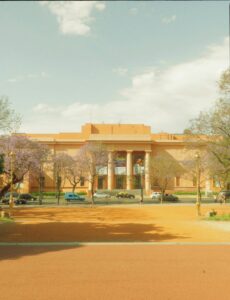Navigating the Heartbeat of Buenos Aires: A Guide to Public Transportation
Buenos Aires, the vibrant capital of Argentina, is a city that pulses with energy. From the bustling streets of Microcentro to the serene parks of Palermo, getting around this sprawling metropolis can be an adventure in itself. Public transportation in Buenos Aires is a labyrinth of options, each with its own quirks and charm. Whether you’re a seasoned local or a curious tourist, understanding the ins and outs of the city’s transport system is key to exploring all that Buenos Aires has to offer. Let’s dive into the world of buses, subtes, trains, and more, and uncover the best ways to navigate this dynamic city.
The Bus: The Extensive Network
The bus, or colectivo, is the backbone of Buenos Aires’ public transportation. With an extensive network covering nearly every corner of the city, buses are the most widely used mode of transport. Operated by numerous companies, these buses run on fixed routes, making them a reliable option for both short and long distances. The city boasts over 150 bus lines, ensuring that no matter where you are, there’s likely a bus stop nearby. However, the sheer number of options can be overwhelming for newcomers. To navigate this, the official Buenos Aires tourism website provides an excellent resource for mapping out your route.
One of the standout features of the bus system is its affordability. A single ride costs just a few Argentine pesos, making it one of the most economical ways to get around. But be prepared for crowds, especially during peak hours. The buses can get packed, and while this adds to the local experience, it might not be the most comfortable option for everyone.
The Subte: The Historic Subway
Buenos Aires is home to the oldest underground subway system in the Southern Hemisphere, known affectionately as the Subte. Inaugurated in 1913, the Subte is not only a practical way to travel but also a piece of the city’s history. Its six lines, each identified by a letter (A to H), crisscross the city, connecting major neighborhoods like Recoleta, San Telmo, and Once. The Subte is fast, efficient, and runs frequently, making it a favorite among commuters.
One of the unique aspects of the Subte is its retro charm. Many of the original stations have been preserved, offering a glimpse into the city’s past. The Subte is also relatively inexpensive, with a single ride costing the same as a bus ticket. However, the network is not as extensive as the bus system, and some areas of the city are not well-served by the Subte. For a detailed map of the Subte lines, you can visit the https://buenosaires.gob.ar/subte/mapa-del-subte-y-combinaciones
The SUBE Card: Your Key to Seamless Travel
Navigating Buenos Aires’ public transportation is made easier with the SUBE card, a rechargeable card that can be used on buses, the Subte, and trains. The SUBE card is a game-changer for travelers, as it eliminates the need to carry cash or buy individual tickets. You can purchase the SUBE card at most kiosks or subway stations for a small fee, and then top it up as needed. This system is not only convenient but also environmentally friendly, reducing the need for paper tickets.
The SUBE card also offers a capped fare system, meaning that after a certain number of trips, additional rides are free. This makes it an excellent option for those planning to explore the city extensively. For more information on how to use and recharge your SUBE card, check out the official SUBE website.
The Train: Connecting the City to the Suburbs
While the Subte and buses are the primary modes of transportation within the city, the train, or tren, plays a crucial role in connecting Buenos Aires to its surrounding suburbs. The city’s train network is divided into several lines, each operated by different companies. The trains are a popular option for those living in the outskirts of the city, offering a relatively quick and affordable way to commute.
One of the advantages of the train is its ability to bypass the city’s notorious traffic. However, the train network is not as comprehensive as the bus or Subte systems, and delays can occur. For a detailed schedule and map of the train lines, visit the https://www.argentina.gob.ar/transporte/trenes.
The Taxi: A Convenient but Costly Option
For those who prefer a more direct and comfortable journey, taxis are readily available throughout the city. Taxis in Buenos Aires are relatively inexpensive compared to other major cities, but they are still more costly than public transportation. You can hail a taxi on the street, or book one through a ride-hailing app like Uber or Didi.
One of the benefits of taking a taxi is the flexibility it offers. You can go directly to your destination without worrying about transfers or schedules. However, be aware that traffic in Buenos Aires can be unpredictable, and what seems like a short journey can quickly turn into a lengthy one. For a hassle-free experience, consider using a reputable taxi company or ride-hailing service.
UBER and Didi: The Rise of Ride-Hailing
In recent years, ride-hailing apps like Uber and Didi have become increasingly popular in Buenos Aires. These services offer a convenient alternative to traditional taxis, with the added benefit of being able to track your journey in real-time. Uber and Didi are particularly useful for short trips or when public transportation options are limited.
One of the advantages of using Uber or Didi is the ability to pay directly through the app, eliminating the need to carry cash. However, prices can surge during peak hours or in high-demand areas, making them less cost-effective than public transportation. For more information on how to use Uber and Didi in Buenos Aires, visit their official websites: Uber and Didi.
Final Thoughts: Embracing the Chaos
Public transportation in Buenos Aires is a dynamic and ever-evolving system that reflects the city’s vibrant energy. While it may take some time to get used to, the combination of buses, Subte, trains, and taxis offers a comprehensive network that can get you almost anywhere you need to go. Whether you’re exploring the historic center or venturing into the suburbs, the city’s public transportation system is your key to unlocking all that Buenos Aires has to offer.
So, the next time you find yourself in this beautiful city, don’t be afraid to hop on a bus, take a ride on the Subte, or hail a taxi. With a little practice, you’ll be navigating like a local in no time. And remember, the journey is just as much a part of the adventure as the destination.






